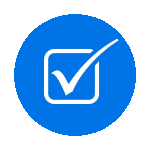Chapter 05. Internal Controls
Introduction

This chapter is dedicated to internal controls, a fundamental aspect of an organization’s governance, risk management, and compliance framework. It outlines the structure, implementation, monitoring, and evaluation of internal controls, alongside the critical role internal auditing plays in ensuring these controls are adequate and aligned with organizational objectives. It begins by examining the control environment, which sets the foundation for all other components of internal control. It discusses the principles and elements constituting an effective control environment, highlighting leadership’s role in promoting a culture of integrity and ethical behaviour.
Next, we delve into the types and functions of internal controls, categorizing them into preventive, detective, and corrective controls. The discussion extends to administrative versus accounting controls and the critical principle of segregation of duties to mitigate risks. The relationship between internal controls and corporate objectives is explored, underlining how a well-designed control environment is the backbone of adequate internal controls across various business processes. The impact of technology on enhancing control systems through automation and security measures is examined, along with the challenges and considerations in control implementation, such as stakeholder engagement and documentation for clarity and compliance.
The chapter then focuses on testing and monitoring controls, presenting strategies for developing a testing plan, employing various testing techniques, and leveraging technology for efficient monitoring. The role of internal audit in this process is emphasized, highlighting its responsibility to continuously monitor controls, address control deficiencies, and report control effectiveness to management and the board. The significance of internal controls in maintaining financial integrity is discussed, including their impact on financial reporting, compliance, fraud prevention, and the essential financial controls required for the financial close and reporting process.
Finally, the chapter concludes with an in-depth look at the role of internal auditing in internal controls. It covers how internal audits assess and test controls, provide assurance on their effectiveness, recommend improvements, and assist management in strengthening controls. Internal audit involvement in fraud detection, training, and facilitating control self-assessment exercises underscores the role of internal auditors in enhancing and safeguarding organizational integrity through adequate internal controls.
 Learning Objectives
Learning Objectives
By the end of this chapter, you should be able to
- Understand the principles and components of an effective organizational control environment.
- Identify and differentiate between preventive, detective, and corrective controls and their functions in risk management.
- Describe the process of designing and implementing internal control systems, including risk assessment and technology integration.
- Learn how to develop a comprehensive plan for testing and monitoring internal controls using various techniques and tools.
- Analyze the critical role of internal controls in ensuring financial integrity, compliance, and fraud prevention.
- Explore the multifaceted role of internal auditing in assessing, testing, and enhancing internal control systems.

